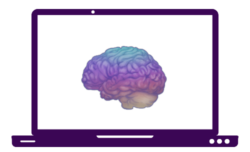
Hello and welcome to my blog! Today, I will be delving into the world of hypnotherapy, the misconceptions surrounding it, what hypnotherapy really is, how it works and what it is useful for. For those that are new here, this will give you a better understanding of why I trained specifically in solution-focused hypnotherapy too.
It is a fascinating subject, with lots of amazing research and neuroscience supporting its effectiveness and I certainly see the benefits of it in myself and my clients. I will enjoy debunking the myths around hypnotherapy, as this has a particularly big one surrounding it. It really isn’t all pocket watches and making people do things against their will, you are fully aware and fully in control.
Common Hypnotherapy Myths
“You have no control”
You are in complete control 100% of the time, you can even choose to open your eyes at any time too and break the hypnosis. To undergo hypnosis and to the depth to which you go, is completely your choice. A hypnotherapist cannot force anyone to do anything that goes against their core values as a person. All hypnosis is self-hypnosis, you are in control 100% of the time.
“I won’t wake up“
You will. When you are in a hypnosis-like state, it is a relaxed and calm state. Some folk will fall asleep but you will not remain asleep, even during self-hypnosis you will wake up again. If you are having clinical hypnosis with a hypnotherapist like myself, then you will be guided out of the calm and relaxed state, and your attention and orientation will be brought around again by the practitioner and you will be fully aware and awake by the time you leave the session.
“You either can or can’t be hypnotised“
Everyone to some degree can be hypnotised. It is a focused state of attention (more detail on that later), it is calmness, it is being relaxed and listening. Like listening to a podcast or audiobook while lying down, relaxing with your eyes closed. You are aware but relaxing.
Yes, it’s true that some folk are far more open to suggestions than others, however, all have the ability to allow themselves to go into a relaxed and calm state and this is when we have access to the amazing subconscious mind. The use of Eriksonian hypnosis, (which is different to a more classical hypnotherapy approach using direct suggestion), uses indirect suggestion and is what I use. I will offer more detail on this later too.

So How does Hypnotherapy work?
Hypnotherapy works by offering the client a space to go into a calm and relaxed state. When specific areas of the brain are focused on the same thing, it is a focused state of attention is achieved. When we have a focused state of attention, we can then have access to the subconscious mind. This is the part of the mind where there are no barriers to memory or learning, so we can offer indirect suggestions or metaphors & stories for the brain to listen to, think about and chew on. Then the brain can decide if the metaphor or information being offered is useful or not and whether it wants to listen to it.
Your brain will not listen to direct suggestions offered if it has no relevance to it or is not ready for it yet. In the same way that brains don’t like advice, they simply do not take it on board. Have you ever told a friend what they could do to help themselves, and yet they don’t do it? So you tell them again, over and over, and they STILL don’t do the advice you have offered, even though you know it would be if benefit to them? This is why. Brains DO NOT like advice. Brains are funny like that. Amazing, but annoying lol. Smart and lazy at the same time.
Because we know the brain doesn’t like to be told what to do, indirect suggestion works so beautifully because the brain doesn’t always recognise when an indirect suggestion is. So it will listen to a story or metaphor and try to see the relevance to itself and how that could be useful for it. It is always pattern matching, looking for relevance and usefulness.
Why is it important to have access to our subconscious mind?
Having access to our subconscious mind enables us to let go of our conscious barriers to memory or learning. What that means is, it offers our brains the opportunity to use and utilise things we may not be consciously aware of. Very simply, this means you can have access to memories you may not consciously remember, or learn things more efficiently. It is a way of offering cognitive flexibility, allowing you to be open and shift your mindset and change the way you evaluate things.
Brain, body connection and learning opportunities
Hypnotherapy enhances things. What I mean by this is, it offers the brain and body connection to be better and more efficient. Hypnotherapy also offers the brain the opportunity to think and learn about things differently. It opens up the brain to the possibility of positive change, whereas when we are conscious or in an awakened state, our brain may not allow this to happen depending on what other things are going on in our world. We are less likely to judge, resist and stop ourselves from taking on new opportunities to learn and improve ourselves, then when we are conscious.
Now, the brain/body connection fascinates me, as someone who lives with a pain condition. This latest research is coming from a leading psychiatrist at Stanford University, Dr David Spiegel. When we go into a deep state of hypnosis, there are changes in the brain that offers the brain/body connection to deepen and become more profound.
1st: The brain waves change similarly to that of a shallow sleep state, so not unlike light sleep. We have a drop in activity in the part of the brain which is stimulated when we are worried about something, it tends to be less active during hypnosis, so people are more relaxed and worry-free.
2nd: An increase in connectivity between certain areas of the brain, specifically the parts associated between planning and organisation and the part designed to help regulate body functions.
3rd: The default mode network (DMN) which is associated with mind wandering/daydreaming, spontaneous thought, self-relfective thinking, inner speech, incedental self-processing, independent thought and other processes. The connectivity with the different areas of the brain associated with the DMN changes during hypnosis.
The autonomic nervous system
The autonomic nervous system is a topic for another blog as it is a vast area to discuss. However, just very briefly, one of the HUGE benefits of hypnotherapy is it offers our brain and body the opportunity to kick off the rest digest part of the autonomic system. When we are stressed, chronically stress, full of anxiety or pain, this can cause the fight slight part of the autonomic system to kick in too much. Enough stress/anxiety etc, makes our brains think some sort of wild animal is after us, such as a really hungry polar bear. This causes our brain to trigger fight/flight and we then release adrenanaline and cortisol which in the short term has its benefits, long term it can cause a LOT of issues.
Hypnotherapy encourages our rest/digest nervous system to engage and creates the pathway for our brain & body to learn relaxation. We can utilise this to reduce stress, anxiety and pain, and then even use it for our non-sleep deep rest, which is fantastic for giving us some energy back in the day, create calmness in our lives and focus.
What does Hypnotherapy help with?
With the above changes in mind, when working with a clinical hypnotherapist such as me, we utilise these changes to offer the brain the opportunity to create and accept positive change. So, we can help with things such as confidence building, anxiety, depression, low self-esteem, public speaking, panic attacks, smoking cessation, insomnia, increase motivation, stress and much more! The full list can be found here. By using stories and metaphors, the brain will munch on them, digest them and then work out whether it is relevant to its current situation. Because you are in this relaxed, focused state of attention, it makes it much more likely for these metaphors and stories hit home and for the brain to utilise them and be open to positive change.
We can also utilise the beautiful brain/body connection to help with pain management! Reducing the pain signal for chronic pain folks, can you imagine? Even if you do not live with a pain condition like me, just have a think about a time when you were in pain, perhaps you cut yourself, or if you ever had that full body horrible achiness/hurt from the flu, now just try to think about that pain but consistently in your life for the foreseeable and to varying degrees too… Rubbish right? Well, what if you could reduce that signal from the brain to the body so it is less intense and all-consuming? We can do that with clinical hypnotherapy. It’s utterly awesome and a tool I use still today to help me manage my conditions too. The best approach I have found is to use the solution-focused approach combined with clinical hypnotherapy. This enhances everything we do in the session. Occupational Therapy is also a fantastic tool to help work out ways of adapting your world to work for you. More details on chronic pain and pain management sessions are here.

Why Solution-Focused Hypnotherapy?
I was put on the solution-focused hypnotherapy path for various reasons, the details of which can be found in my about section of this website. What I love about it though, it is all brain-based/neuroscience-based therapy. Clients learn about their brains, and why things happen the way they do and we help them towards their preferred future, what ever that preferred future maybe. The latest neuroscience backs up everything we do, we offer the tools for our client’s lives going forward, so if they struggle again in the future, they have everything they need to manage, cope better and get back on track themselves too.
The other aspect is that we use solution-focused talk, also known as problem free talk and solution focused questioning. We do not talk about problems or horrible stuff from the past all day long. We acknowledge problems and then we look for solutions and get the brain visualising and thinking about how it can move forward and what that could look like. There is neeuroscience behind all of this too! What happens in the brain when a client comes up with answers to the type of questions we ask, such as the miracle question. Just fascinating!!! I could talk about the solution-focused approach all day but perhaps that is for another blog.
I hope you have enjoyed the information in this blog, let me know your thoughts in the comments below 🙂
Until next time, take care and don’t forget to self-care!
Kim Clayden
Solution-Focused Psychotherapist, Clinical Hypnotherapist & Muss Rewind Practitioner.
HPD, DSFH, MNCH (Reg), CNHC (Reg), AfSFH (Reg)
